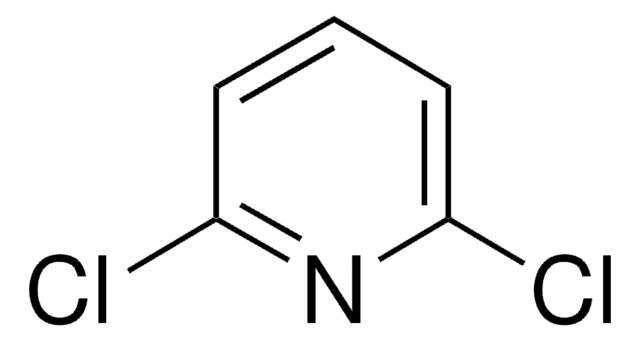456543
2,6-Dichloropyridine-4-carboxylic acid
98%
Synonym(s):
2,6-Dichloroisonicotinic acid
Sign Into View Organizational & Contract Pricing
All Photos(1)
About This Item
Empirical Formula (Hill Notation):
C6H3Cl2NO2
CAS Number:
Molecular Weight:
192.00
MDL number:
UNSPSC Code:
12352100
PubChem Substance ID:
NACRES:
NA.22
Recommended Products
Assay
98%
form
solid
mp
209-212 °C (lit.)
SMILES string
OC(=O)c1cc(Cl)nc(Cl)c1
InChI
1S/C6H3Cl2NO2/c7-4-1-3(6(10)11)2-5(8)9-4/h1-2H,(H,10,11)
InChI key
SQSYNRCXIZHKAI-UHFFFAOYSA-N
Related Categories
Signal Word
Warning
Hazard Statements
Precautionary Statements
Hazard Classifications
Eye Irrit. 2 - Skin Irrit. 2 - STOT SE 3
Target Organs
Respiratory system
Storage Class Code
11 - Combustible Solids
WGK
WGK 3
Flash Point(F)
Not applicable
Flash Point(C)
Not applicable
Personal Protective Equipment
dust mask type N95 (US), Eyeshields, Gloves
Certificates of Analysis (COA)
Search for Certificates of Analysis (COA) by entering the products Lot/Batch Number. Lot and Batch Numbers can be found on a product’s label following the words ‘Lot’ or ‘Batch’.
Already Own This Product?
Find documentation for the products that you have recently purchased in the Document Library.
M Rauscher et al.
The Plant journal : for cell and molecular biology, 19(6), 625-633 (1999-11-26)
Treatment of broad bean leaves with salicylic acid (SA) or 2, 6-dichloro-isonicotinic acid (DCINA) induces resistance against the rust fungus Uromyces fabae resulting in reduced rust pustule density. Light-microscopy studies showed that in induced resistant plants the rust fungus is
Yuelin Zhang et al.
The Plant cell, 15(11), 2647-2653 (2003-10-25)
Arabidopsis nonexpresser of pathogenesis-related (PR) genes (NPR1) is the sole positive regulator that has been shown to be essential for the induction of systemic acquired resistance. In npr1 mutant plants, salicylic acid (SA)-mediated PR gene expression and pathogen resistance are
European Journal of Organic Chemistry, 22, 4445-4449 (2003)
Proton Mobility in 2-Substituted 1, 3-Dichlorobenzenes:?ortho? or ?meta? Metalation?
Schlosser M, et al.
European Journal of Organic Chemistry, 19, 4398-4404 (2006)
Uwe Conrath et al.
Trends in plant science, 7(5), 210-216 (2002-05-07)
Plants can acquire enhanced resistance to pathogens after treatment with necrotizing attackers, nonpathogenic root-colonizing pseudomonads, salicylic acid, beta-aminobutyric acid and many other natural or synthetic compounds. The induced resistance is often associated with an enhanced capacity to mobilize infection-induced cellular
Our team of scientists has experience in all areas of research including Life Science, Material Science, Chemical Synthesis, Chromatography, Analytical and many others.
Contact Technical Service








